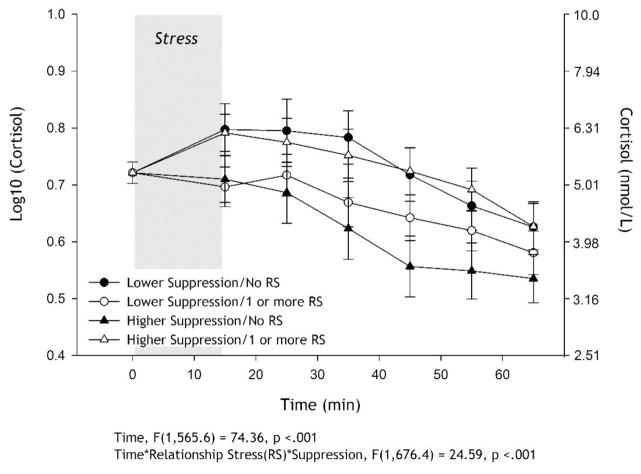Figure 2.
Salivary cortisol (mean ±SEM) response to acute lab stressor (log transformed on the left axis and raw on the right axis). Linear mixed model controlled for age, sex, race, smoking status, speech topic, hormone medication use, education, body mass index (BMI), non-relationship stressors as fixed effects and baseline cortisol and time of day for baseline sample as the random effects. Number of recent relationship stressors (RSs), trait emotion suppression, time and all 2- and 3-way interactions were fixed effect predictors. To approximate the significant time * RSs * suppression interaction, the sample was mean split on suppression and RSs as a dichotomous variable (0 = no RSs; 1 = 1 or more RSs) for interpretation and display purposes; however, RS and suppression were entered as continuous predictors in the mixed linear model, not as categorical. Among those who reported greater suppression, no RSs (▲) was related to a minimal cortisol response followed by quick recovery, while individuals with RSs (△) appear to display the typical cortisol reactivity with a significant rise and recovery to baseline within 50 minutes of the stressor ending. For those who reported lower suppression, the experience of RSs does not significantly affect their cortisol response over time.

